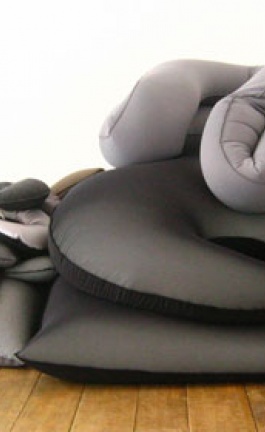portrait of Rolf Fehlbaum / photo © Vitra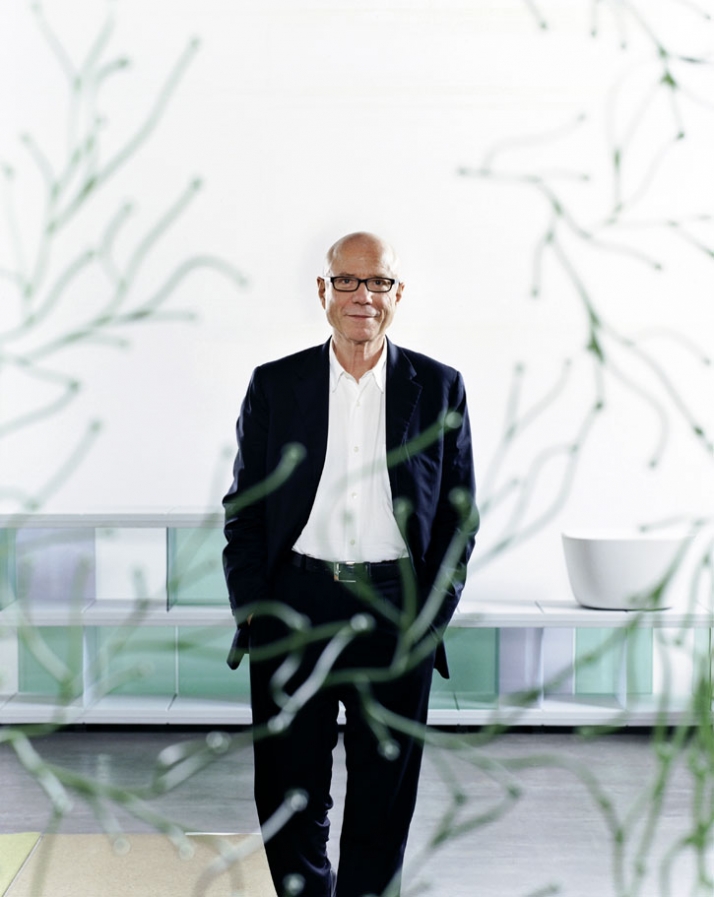
interview and text by Blaga Bancheva for deZona
Vitra is not just a company producing furniture. Vitra is an open-end project. Willi and Erika Fehlbaum have initiated it in 1957 in Basel (Switzerland) and Weil am Rhein (Germany). Nowadays Vitra turns into a very special emotional experience for everyone who gets in contact with it. With the years the project includes lots of initiatives but the engine always remains the same remarkable person – Rolf Fehlbaum.
Rolf Fehlbaum, chairman of VITRA company, gave an exclusive interview to Blaga Bancheva for deZona.
And Yatzer couldn't resist republishing it!
Marshmallow Sofa, George Nelson, 1956 / photo © Vitra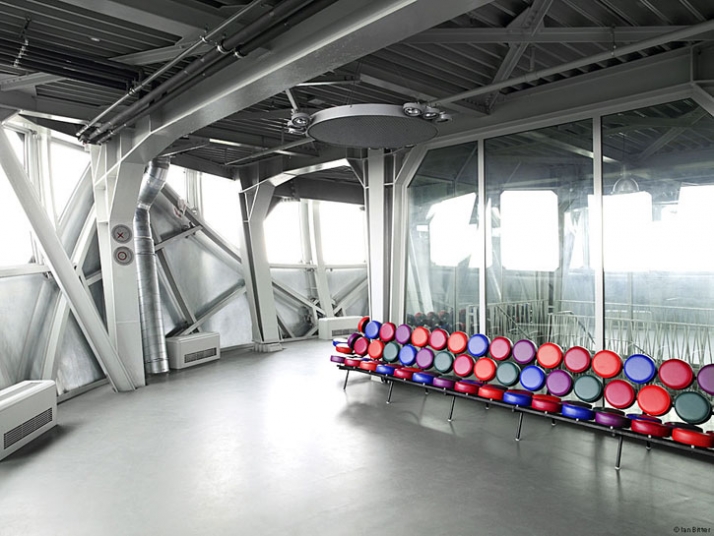
How was Vitra established?
My father has been working in a small company that has been making shop fittings. When the owner has died my father has taken the company over. In that period he has been very young – only 21-years old. He has been a bit dissatisfied by the seasonal character of the business because most openings of shops have been in the autumn. He has been looking for something that is more regular.
In the early 50-ies my father started to produce a bit of furniture. Then in 1953 he went to the USA for the first time just to look what happens in their shopping centres. There he saw the Eames furniture and was blown away. This furniture was very technical but also very comfortable and totally new. He thought that it would be good if he could produce them in Europe. He approached the producer Herman Miller and after long negotiations in 1957 my father started to produce the Eames and Nelson furniture here. In the first years, from 1957 to 1960, were just Eames and Nelson, after that the relations with Verner Panton started. Over the time other new products were added. But the beginning of the company that you know as Vitra is actually 1957.
What was your home from the childhood?
Actually it was very normal. My parents were typical self-made people. When I was a very small child, we lived in a very little apartment. Later when we became a little bit more affluent, we lived with normal bourgeois furniture. Only when my father started to work with these new products, the home changed. I was very impressed because everything had to go out and everything that came in was new - all were Eames and Nelson furniture. We made something like a cultural revolution.
What was the mood in your family? Have you been habituated to design as a child?
Not until I was 16 years old. It was 1957 when the new world came to me. In that time I was in my teens and in that sense I was not educated at early age in design. I was influenced personally by the encounters with Eames and Nelson. I was speaking English well and at that time I had to translate to my father and so I’ve got in contact with these people. That was very important for me and influenced me a lot as a youth.
Panton Chair Classic, Verner Panton, 1959 / photo © Vitra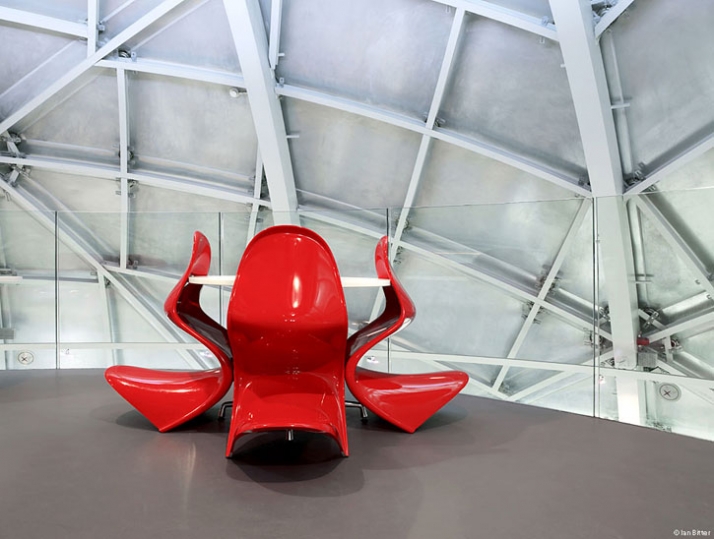
Did your father intend to turn Vitra into a world leading company? What were his plans for the company in the beginning?
Everybody would like this idea. He looked a lot at two companies – Herman Miller and Knoll. He was sort of hoping that one day Vitra would be an important company like these two. Now both companies are much bigger than Vitra but in terms of strings of products innovation that goal has been achieved over the years.
In 1977 when I started work in Vitra, the company was presented only in Switzerland and Germany. I wanted to create Vitra companies in Europe and then in other parts of the world. Still we are very strongly a European company. We have an American Vitra, but we are very weak in South America. We have a partner in Japan, but it’s not Vitra in Japan.
How Vitra furniture is accepted around the world?
The world is still culturally rather determinated. The culture of furniture is different from the machine world. You can use the same telephone or computer in the whole world. But in furniture field even if you are good in Europe, that doesn’t make you automatically good in the USA.
In an interview we recently made with Giulio Cappellini (the manager of Cappellini) he said, “Vitra is a Swiss company that works like an Italian one”. How will you comment his attitude?
Italy used to be a territory of a good design and still is. The original idea of a design company is that the entrepreneur (like Moroso) is very much involved in design. In these companies design is not a department like the others but the major discipline that the entrepreneur is very closed to. In Italy there are more of these people than in the other countries. Giulio is one of the most inspired people among the design-oriented entrepreneurs.
left: La Chaise, Charles & Ray Eames, 1948 / right: Algue, Ronan and Erwan Bouroullec, 2004 / Photo © Vitra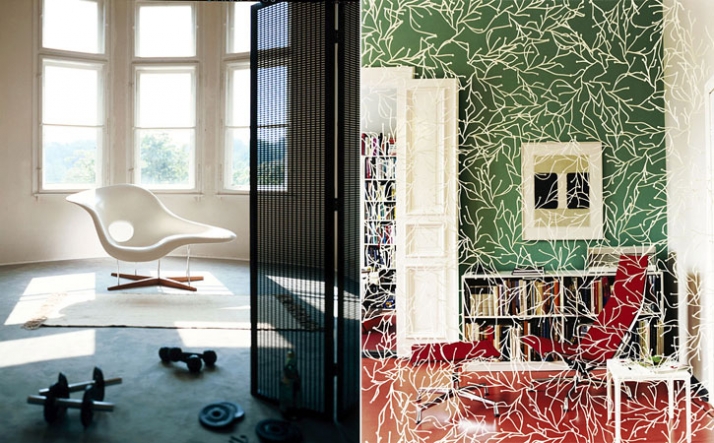
How do you choose designers to work with?
It is a combination between accidental situations when I meet somebody, see something or like another. It is very intuitive. I let it happen; I don’t study it. I don’t try to be complete. I have always looked for architecture or design with an image pleasure. Over time, if you look at good things every day, then it is almost evident what is right for you. Until now I haven’t been totally wrong.
We work with very few designers. We try to find designers who are relevant, not just skilled; who have something to say today about our world in general and then give answers in terms of products. We make a selection of those who fit in a particular way with our sort of thinking. We try not to have two designers who work in the same way. We like designers who do different things on different themes in different ways. Jasper Morrison, Hella Jongerius, Bouroullecs – each of them presents different aspect of design world.
Does it mean that you are not interested in working with young designers but with already established professionals?
It depends what is young. The youngest of our designers are the Bouroullec brothers. We started to work with them in 2001 when they were relatively young. We don’t go to schools to find the next talents. We work creatively early but not in the very beginning. Mostly designers have done something somewhere before we start working with them. We are not a school.
Lounge Chair & Ottoman, Charles & Ray Eames, 1956 /photo © Vitra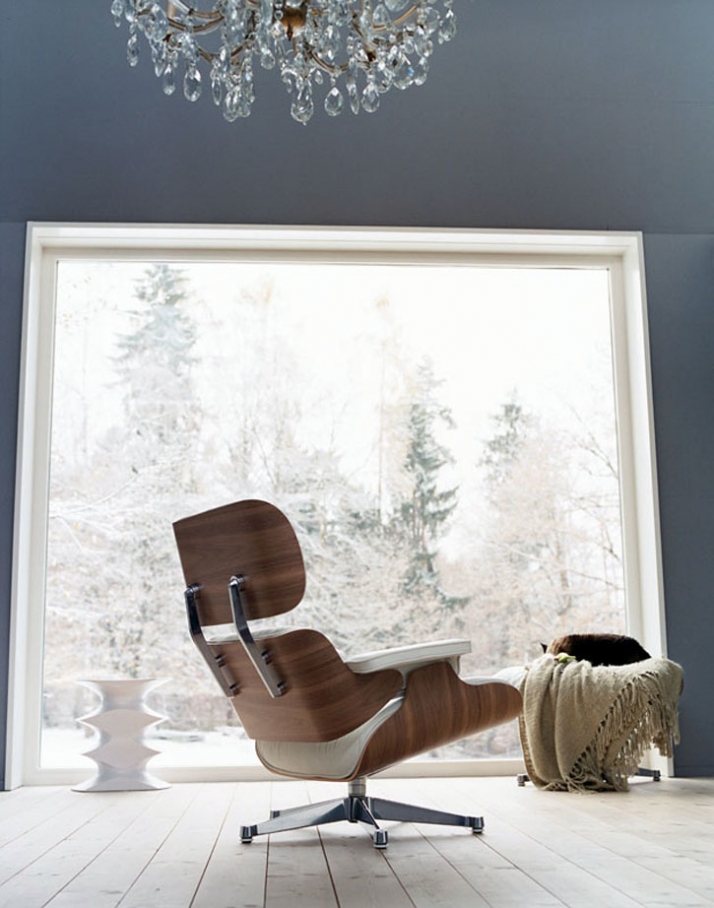
You work with many designers who are bright individuals! How do you balance and subordinate them to the main design strategy of Vitra?
Design management is a skill. You have to do it well, to help the designer to give his/her best. You have to motivate them, to give the right support, to ask the right questions, to discuss in the right way. We do that relatively well. Usually we have very productive relationships with designers. We respect them very much. We want to listen to them. We ask them what they think, what are their proposals.
How a new product happens?
We are not like an editor who finds a manuscript and publish it. Usually we decide together what the problems or issues are and then start working together. Design is not in a way like the architecture. In architecture the client says what he wants, then the architect goes away and comes back with a proposal. Design is different because it is more a common project. Sometimes we give an idea, sometimes – the designer. Usually it is said that the product is designed by Bouroullecs for example. This is not completely right because it is always a product designed by Vitra and Bouroullecs.
Why did you decide to specialize in chairs? It is said that chair is the most difficult furniture to be designed and produced.
This happened with not a decision. Probably came from working and producing the Eames products. They were interested in chairs, so we made chairs. Tables and wardrobes are also interesting but chair. It is a very complex product that has to do more functions. It has many expressions.
Vegetal, Ronan and Erwan Bouroullec, 2008 / photo © Vitra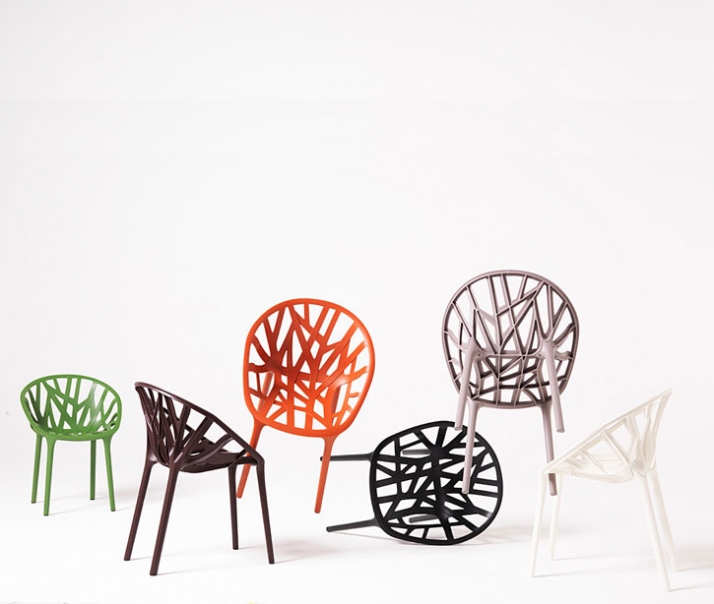
As editors we see lots of office interiors most of which are similar and boring. Do you think the reason is the fact that function is the most important feature in office furniture design?
The more you are in a rational world, the more you want to be completely sure in functions. You are sort of a bit worried about too much expression. It is true that office furniture has to face many criteria and this tends to reduce the possibilities of expression. Sometimes this is the reason more offices to be on the boring side. It also has to do with the client. If he doesn’t see a necessity to make the work area more interesting, he doesn’t buy interesting things. The productivity is very related to the quality of the environment. The environment has to be inspirational, because people spend many hours in the office.
Vitra’s headquarters in Birsfelden and Weil am Rhein are very impressive. Do they illustrate your idea for the perfect office?
The office of today has to take into consideration that people come to the office mostly to communicate otherwise they can work from home. The office prevents you from a bad communication. It is bad if all the time you have over communication and you never have moments of peace. For this cases we created the Net’N’Nest concept – you have the communication, the netting and nesting in the same time. These are areas to go back, to be by yourself and to be protected. In the end the most important thing is to find a good balance between the netting and the nesting.
left: Hang it all, Charles & Ray Eames, 1953 / right: home desk, George Nelson, 1958 / photo © Vitra
You have very clear ideas about the office environment. What about the home?
That is much less clear. The home is a really personal matter. We cannot and we don’t have to tell people how they should furnish it. We don’t have a style and we don’t propose a style. We have objects that can be combined with other products. Also we don’t think that an apartment or a house should be all Vitra. Opposite an office can be very good all with Vitra because we have solutions for every problem.
Copying design is such a big problem nowadays. How do you fight with it?
Some legal systems look at design as something right protected and others don’t give you good protection. In Italy and England for example it is very hard to protect design. In Germany, Switzerland, Benelux countries and France the system is much better. On the other hand, we try to convince people that it makes sense to have an original. The difference is not only in the price. The one who copies probably didn’t understand the production process very well and usually he is not a very careful person. Many times copies are done very badly. The other aspect is whether you want to own something stolen.
Design protection is not an idea that you block a concept but its particular expression. If someone takes an idea and develops it further, that’s an evolution. The definition of original is different from art. In art original is usually a unique work or if it is print, there is a defined quantity and every copy is signed. The design is made with the idea of reproduction in the mind. Original is the result of legitimate cooperation between inventors and manufactures.
You deal with design for so many years. Do you feel tired of design sometimes?
I am not living with design in any exaggerated way. I am very normal. I live mostly with products that we do, but not only. If you have a sort of an exaggerated living style, may be you will get fed up…
I was speaking in general because your job is connected with design…
Design is not a religion. I work with designers to do good products. I am not in the hype; I don’t go a lot to fairs, discussions… Sometimes I think there is too much design in the world and then an ammoniums designer attracts me. I like the Supernormal initiative by Jasper Morrison – to do things that are almost undistinguishable from others but which are nicely done…
I have many other interests like architecture or things not related to design. I am not talking to design all the time. I think about the project Vitra all the time but it has many aspects.
Polder sofa, Hella Jongerius, 2005 / photo © Vitra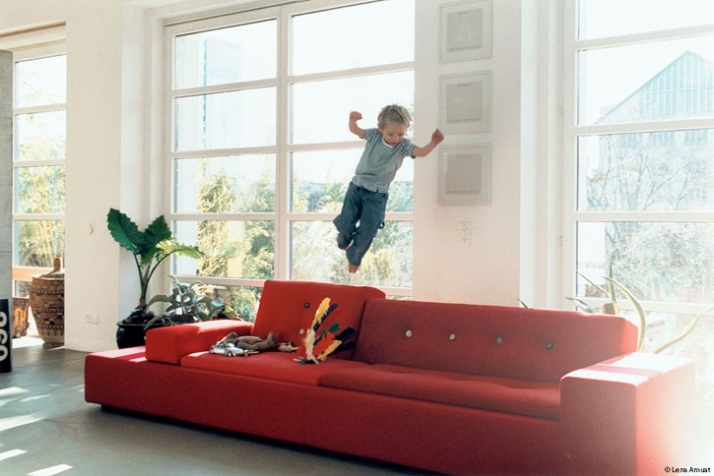
Is there a particular product (not only by Vitra but in general), which expresses the best the spirit of our contemporary life?
By definition you do not know what 10 or 20 years from now will be seen as the strongest in the time. These prophecies are useless.
Do you have favourite furniture produced by Vitra?
No. There are products that I am more interested in a certain stage of their creation than of another. Generally I am fond of all made in Vitra otherwise we wouldn’t make it. I love all the Eames products, also Prouve and Panton. The classics by definition are products that have survived very long. They have faced many other products trying to be better. Every product has many enemies that are trying to get its place on the market.
I had prepared some personal questions as well but as I understood you never answer such. Why?
I just don’t like them. You know, there is also this famous questionnaire by Proust… How I get up, what I drink, what I watch is only my business. Some people are interested to talk about their personal aspects. I have nothing interesting to say. For me relevant is what is expressed by my work. That should be dealt with.





